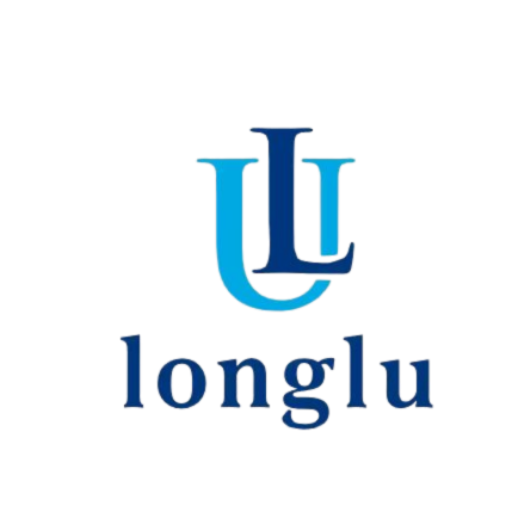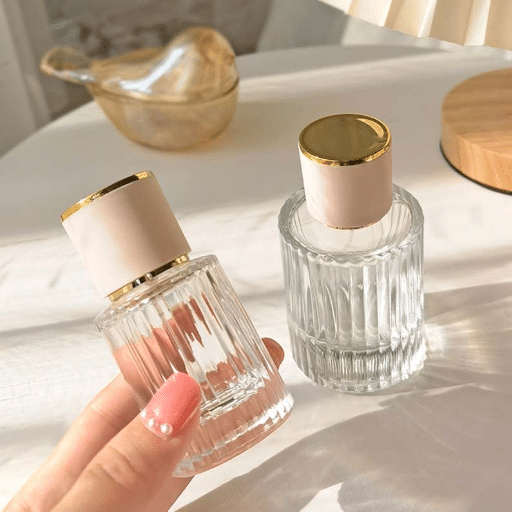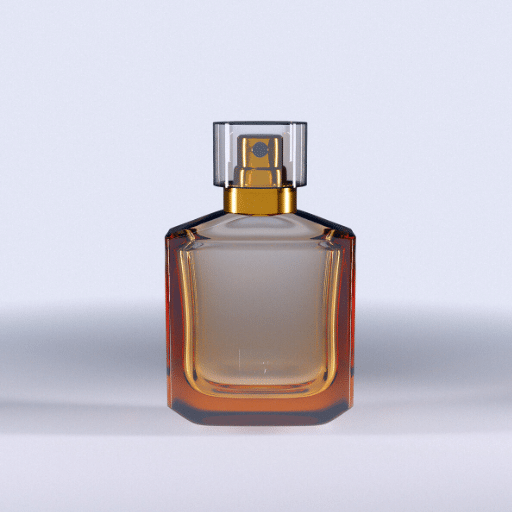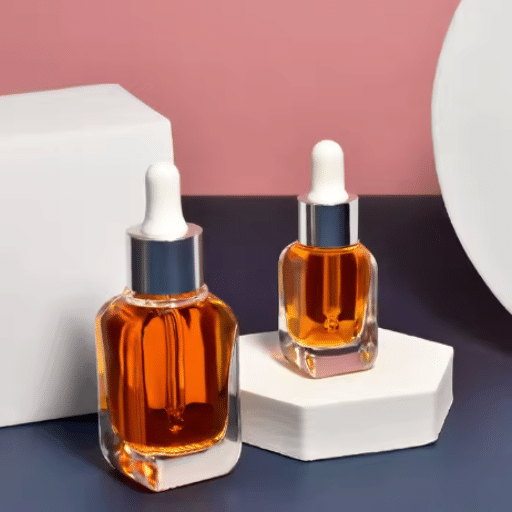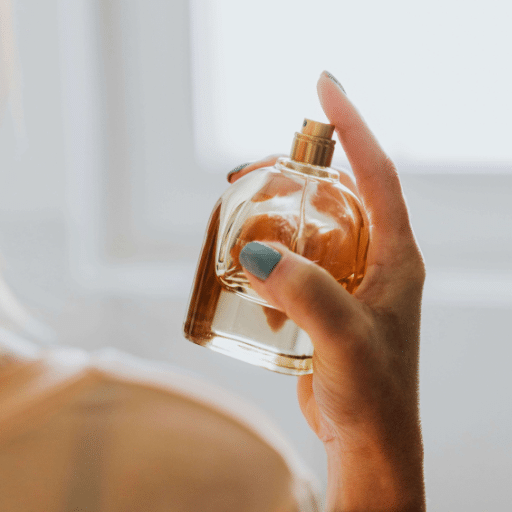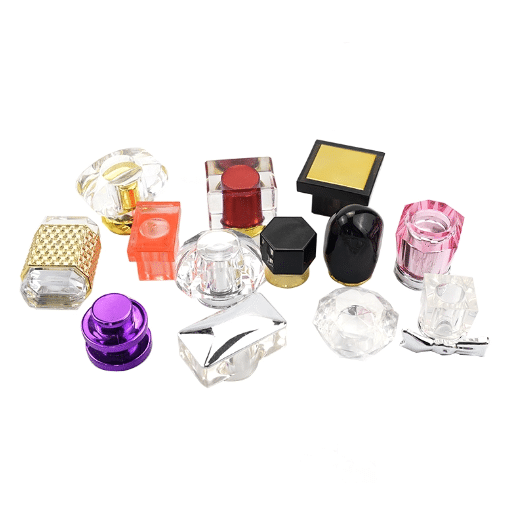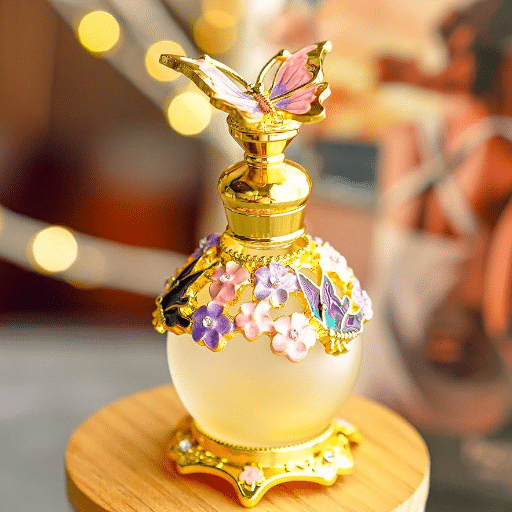Navigating the many B2B obstacles on the path to purchasing perfume bottles for a business requires a wise, patient plan to succeed in a market where competition is continually increasing. Every step, from the one effective Request for Quotation (RFQ) through negotiation of a firm contract to implementation of stringent quality assurance measures, is crucial in the supply chain. This blog post will provide a very detailed plan of activities for businesses that want to improve their purchasing processes while also ensuring quality and cost efficiency in a rigorous, high-quality manner. If you are looking for new and very different designs to offer, or to ensure compliance with industry standards, this guide is your key.
Understanding the B2B Perfume Bottle Market
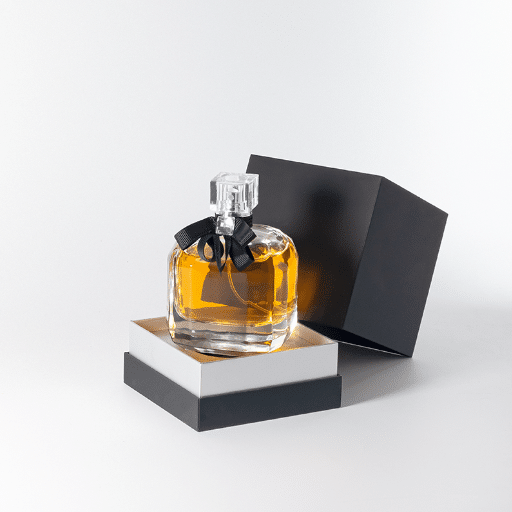
The B2B fragrance containers section is highly distinguished by three main factors: individual production, diverse materials, and aesthetic advancement to meet fragrance makers’ branding requirements. The most common among the top materials are glass, plastic, and, rarely, metal, but glass is still the most popular for its classy look and recyclability. Moreover, suppliers regularly exceed the client’s expectations by creating unusual shapes, colors, and finishes that align with the high-end or niche brands’ advertising campaigns. On top of that, companies are increasingly sticking to the green path, namely producing green products and using waste-free packaging. The market is very competitive, so manufacturers need to consider three main factors: a well-designed bottle, high quality, and cost-effectiveness during the bottle acquisition process.
Overview of the Perfume Industry
The perfume business is still growing, with the global market reaching approximately $50 billion in 2023 and forecast to exceed $70 billion by 2030, driven by the steady increase in demand for premium and a more modern/niche-like lifestyle. Speaking of customers, they can’t deny that there is a growing market for personalized and artisanal scents; these are quite individualized and sophisticated, as is clear. All these changes have made brands rethink and undertake new ventures, such as offering exclusive fragrance services or creating collections for specific target groups, while also being the coolest in town.
A significant trend still visible is the rise of purely natural, organic scents. It is mainly because customers have become increasingly committed to finding a way to live a lifestyle free of the chemicals usually found in the things they buy, so the scent of their perfume would be no exception in this journey. This trend is right in line with the condition of meeting the customer’s needs, depending on the state of the earth, to live responsibly, with correct sourcing and ethical practices in the supply chain. Despite high advertising spending, many companies are slow to adapt or engage in eco-friendly, sustainable practices, thereby not contributing to environmental or social causes. On the other hand, the ‘silent green’ group of consumers is getting stronger and is made up of people who do not support the cause by shopping from the big companies.
The perfume industry is being affected by digital changes in the same way, with the emergence of online commerce and virtual discovery solutions, including AI-powered, personalized scents based on customers’ behavior. Hence, this new system enables buyers to explore a wide variety of fragrance options and, at the same time, receive a shopping service tailored to them. The fashion house continues to make these adjustments to their systems, despite that, thus remaining connected to the modern market.
Key Players in the Perfume Bottle Supply Chain
The perfume container supply chain comprises key players who are involved in the production, design, and delivery of high-quality packaging in the most efficient way possible. Initially, it is the raw material suppliers who are the weak link, delivering glass, metal, and plastics to the most likely sourcing locations and often complying with sustainability and eco-friendly regulations. Packaging manufacturers are the actors who design these materials into different bottles through innovations such as lightweight glass and recyclable components. This is how they make the bottles consumers desire while remaining considerate of the environment.
An essential part of the supply chain is made up of the design agencies and branding experts, who work to create high-end, uniqu,e and exclusive-looking packaging that fits consumer trends and is in harmony with the brand image. Logistics providers move bottles from producers to retailers using tracking systems and carefully planned routes, ensuring seamless transportation while also providing high-tech supply chain services.
In the end, regulatory bodies have the most significant impact on the supply chain by setting rules for safe materials, responsible environmental practices, and standard production procedures. This complex web of processes is essential in the fragrance industry, allowing it to develop and sell not only appealing but also ecologically friendly and technologically advanced products that align with innovation trends while still meeting the sustainability standards set by changing consumer needs.
Types of Perfume Bottles in B2B Supply
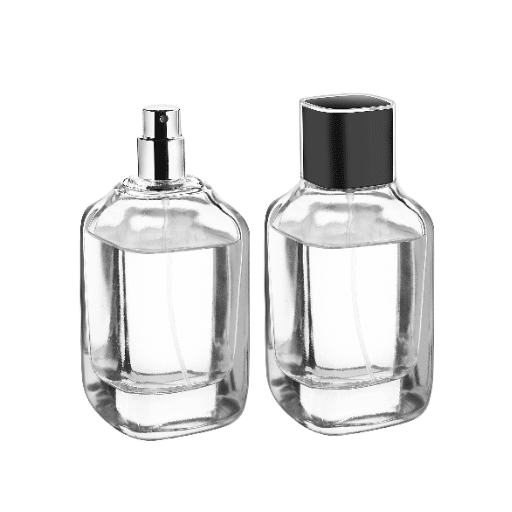
The distinction in a B2B business of perfume bottles is made chiefly by material, design, and functionality. There are three types of mostly seen bottles:
Glass Bottles
Glass bottles’ luxury and longevity are why they are most commonly found in high-end perfumes. They are often made to suit brand-specific aesthetics, including changing the glass color, applying frosted finishes, or creating detailed designs on the glass.
Plastic Bottles
The most common use of plastic bottles is for price-conscious customers or for travel-size products. Furthermore, plastic bottles are unbreakable, light, and have many other uses. Moreover, advances in recycled plastics are another reason why they have become so popular, especially in sustainable packaging.
Metal Bottles
Metal bottles for niche markets are the best option when a brand wants to portray itself as a modern, high-end brand and protect its fragrance’s packaging from light and temperature changes.
Although every type of these bottles is made for different reasons, their choice is primarily determined by the customer base the brand targets, the money to be spent, and the goal of saving the environment, no less or no more.
Benefits of Glass Perfume Bottles
Preservation of Fragrance Integrity
The glass is completely sealed against water and inert, so the fragrance inside doesn’t “talk” to it. This is a big plus, as it’s likely that perfume scents will be of consistent, potent quality for a long time, and that no contamination or changes will have been introduced by the process of material leaching.
Superior Barrier Properties
Glass is an excellent shield against air, humidity, and temperature fluctuations. A 40% drop in the aromatic quality of perfumes stored in glass containers over 12 months was observed in a study, compared with those stored in other materials such as plastics.
Aesthetic Appeal
Transparency is one of the key factors that make glass containers more attractive to customers. They can offer an in-shop experience by allowing product viewing, which is very likely to maximize the product’s psychological value and trust in its quality.
Recyclability and Sustainability
Glass is 100% recyclable and retains its quality, making it a very wise, environmentally friendly option. Glass recycling is mainly used to produce new bottles, and the process’s efficiency is evident in the fact that 30% of all glass containers were made from recycled glass within the last 6 weeks of their production date.
Durability and Longevity
Even though glass is now considered less durable than certain other materials, technological advances in tempered and chemically treated glass have made it a much more durable material. Moreover, glass is not only aesthetically appealing but also able to store items long-term, especially fragrances, with little to no degradation over the years.
Resistance to UV Light
Deep-tinted or coated glass can also be used, as scents will not be affected by UV light. It is critical to note that this is a key factor for perfumes that contain sensitive, light-reactive materials.
Custom Fragrance Bottle Options for Branding
The custom fragrance bottles are not just containers for scents; they also serve as potent branding tools, enabling companies to create a visual identity that speaks to their target audience. The adoption of 3D printing has finally enabled the use of less common design options, such as exclusive shapes, frosted finishes, and delicate embossing, all of which lend a stronger, more distinctive character to a brand’s image. Moreover, the fractal laser technology used was among the first of its kind on the market because of its accuracy and its push of the aesthetic boundaries.
High-quality materials, including recycled and sustainably sourced glass, can help companies cater to the needs of eco-conscious consumers without sacrificing product quality or brand grace. Moreover, the use of chrome accentuation, i.e., gold or rose-gold lids and spray mechanisms, may make even the most humble of products look high-end. The ability to choose colors through gradient patterns, matte coatings, or glossy finishes not only adds to a product’s identity but also ensures the bottle stands out from others in the store.
Consumer surveys have found that aspects of product personalization, e.g., engraved names or refillable bottle systems, are also catching the eye of consumers who want a mix of style and functionality. When such designs are mixed with the waxing technicalities, you get a brand that can be easily distinguished in the present-day perfume world.
The RFQ Process for Perfume Bottles
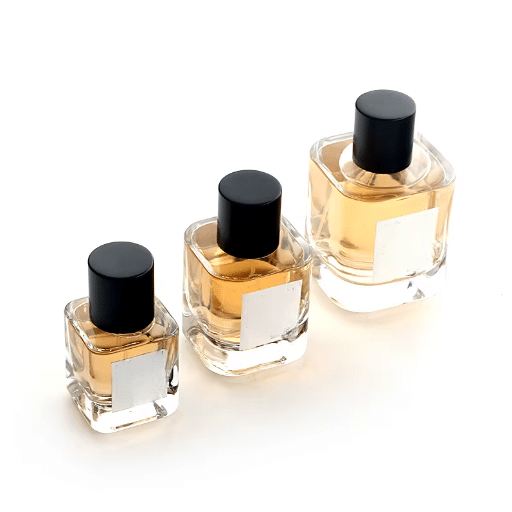
The RFQ (Request for Quotation) process for perfume bottles is highly regulated, designed to make bidding and procurement of the product more customizable, improve vendor selection, and more accurately estimate product costs. It is a standardized practice that is always made up of the following most critical activities:
- Specification Definition: Indicate the same specific properties; the materials, finish, and maybe the additional design that the perfume bottle is to have. Providing manufacturers with technical drawings or 3D renderings of the highest quality will ensure an exact presentation.
- Vendor Identification: Assemble a selection of potential manufacturers or suppliers capable of producing premium-quality perfume bottles. Concentrate on those that align with your materials and customizable options.
- Request Submission: Submit the RFQ, which should contain the entire technical specifications, quantities, delivery schedules, and any other conditions. Use simple, short language so there is no gap in communication.
- Evaluation of Quotes: Rate the project proposals based on price, production ability, lead times, and quality control. Confirm that bids are consistent with your requirements and affordable.
- Supplier Selection: Locate the supplier that stands out for the two factors, value and trustworthiness. Give priority to those who have demonstrated that they can provide products and services in a consistent and superior manner.
- Prototyping and Approval: Typically, samples are required to validate the final product before commissioning mass production. This is the stage that sees the design and quality become what you expect.
With the following steps, the RFQ process effectively aids communication with suppliers, helps control costs, and ensures the production of the best quality, which is what your brand stands for.
Essential Information to Include in Your RFQ
The main thing that will make your RFQ successful and ensure suppliers submit highly accurate proposals is to provide complete, exact details. Here is a guide to the core information that should be a part of it:
- ✓
Detailed Product Specifications: Specify unambiguously the size, raw materials, weight, color, and any other tech-compliance requirements. This way, suppliers will fully understand the complexity of your work and its scale. - ✓
Quantity Requirements: It is essential to state precisely the required quantities of goods, including the possibility of repurchase, to give suppliers a clear idea of your production scale and to facilitate consideration of volume pricing. - ✓
Quality Standards and Certifications: Whenever specifying products, include any quality benchmarks, industry standards, or certifications that must be complied with, such as ISO standards or industry regulations in force. Be pragmatic and provide references to substantiate them. - ✓
Delivery Schedule: It is critical to schedule all deliveries so they align with preferred transportation options and do not exceed any crucial deadlines, thereby establishing the conditions for the on-time operation of the supply chain. - ✓
Packaging and Labeling Instructions: Specify the material types, the packaging method, and the labeling requirements that are crucial for storing goods, including shipping, and for making this a compliant product, e.g., through barcoding or eco-friendly measures. - ✓
Terms of Payment: Express your payment terms (e.g., net 30 days, progress payments), and specify an acceptable degree of flexibility if needed, since setting the payment terms at the beginning will prevent any negotiation issues later. - ✓
Evaluation Criteria: Explain how the supplier will be selected, for instance, based on cost, delivery time, quality, or the provider’s dependability. This information will make it easier for suppliers to adapt their offers to your needs. - ✓
Warranty or After-Sales Support Requirements: Should the case require it, suppliers are to provide details of their product warranties, the manner in which defects are to be rectified, and the availability of continuous product maintenance or support options.
All this information in the proposal document will ensure that the RFQ process is conducted as straightforwardly as possible, that misunderstandings are avoided to the greatest extent, and that you can identify the best bidder to meet both your operational and strategic goals.
Evaluating Supplier Responses
In the process of supplier response evaluation, it is essential to use a practical, data-driven methodology to make selections aligned with the company’s goals of merit and differentiation. Therefore, the first step is to check if the supplier’s proposal is complete and transparent compared with the RFQ requirements. This can be done, for example, by looking at all the parts requested by the buyer, including pricing, delivery times, and quality.
Since you are like a heart in a complex organism, you can play a vital role in a company. To measure supplier reliability and ability, performance metrics and historical data must be analyzed accordingly. Among the essential information is the on-time rate, trends in defect occurrence, and the supplier’s operational scalability as demand increases. Furthermore, assessing the financial health of potential suppliers can indicate their stability and long-term viability.
Application of weighting criteria aligned with the company’s priorities could help make the evaluation process even fairer than before. For example, if cost is the most critical factor, then lower-priced options should receive many points. On the other hand, if innovation or sustainability are the necessary conditions for your business, the decision should be taken to such an extent. The use of the scorecard system or the inclusive tools of the matrices used for supplier evaluation can help even more by aligning and integrating the process while simplifying it.
Negotiating Contracts with Suppliers
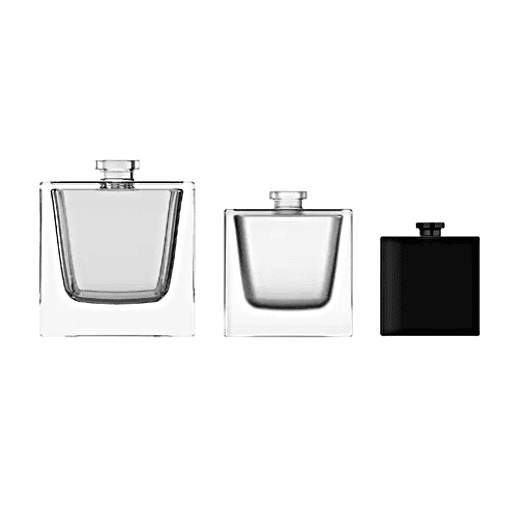
Preparation and Research
Start by thoroughly understanding your requirements, budget restrictions, and expected results. Research the vendor’s past, market image, and cost structures to establish a strong bargaining position.
Clear Communication of Expectations
Briefly state the critical terms, including delivery times, product specifications, pricing, and payment plans. Ensure both parties understand and align with the key deliverables to prevent future disputes.
Focus on Mutual Value
To create a mutually beneficial solution and build a partnership, negotiate a settlement that pleases both sides in the long run. One of the suggestions is to pursue quantity discounts, issue payment contracts, or even share market risk as a joint burden.
Legal and Compliance Review
As to whether the clauses are clear and legal, it is strongly recommended that the legal team be on board; that is, it should be legal counsel who ensures the terms protect your organization’s interests and comply with the law.
Document and Finalize Agreements
When the negotiations are over, the next step is to put down the agreement in black and white, which contains all the points that have been agreed upon. Then, both sides should endorse and keep their copies as a reference and proof of commitment.
Understanding Pricing Structures and Wholesale Rates
Pricing models and wholesale rates are very important to profitability, market competitiveness, and long-term business growth. To grasp these concepts, let us look at the pricing models, the variables that impact wholesale rates, and the link between production costs and end-market pricing.
Economics related to large quantities of goods, raw materials, labor, and other cost factors are primarily determinative of wholesale prices. The business operations need to consider these parameters, as they would lead to high implementation costs during market studies, thereby affecting profits. In addition, industry benchmarks and competitor pricing can provide a sense of the rate to charge among competing companies without sacrificing accuracy. Companies use different approaches to price their products, such as tiered pricing models, volume discounts, and flat-rate structures, which cater to customers with varying needs and purchasing behaviors.
To improve pricing strategies, companies can leverage tools such as financial software, market trends, and analytics, as these are essential to modern businesses. They give the customers insights into the market that might be impossible to get by just observing it. The companies also become better at predicting the market’s next steps and controlling prices through smaller sizes. Such detailed assessments can be carried out by businesses that want to ensure the availability of their products and services, while considering the demands and the company’s financial position.
Managing Long-Term Supplier Relationships
It is essential to have long-term, strong relationships with suppliers to achieve consistent quality and supply chain stability, and eventually to obtain cost-effective solutions. Because of this, it is essential for a business to manage its suppliers effectively by evaluating suppliers’ performance, adhering to contract terms, and maintaining continuous communication to address potential problems. Enabling the organization with modern supply chain management systems and successful data analytics would mean the company can track suppliers’ performance on lead times, defect rates, and other metrics, and remain compliant with regulatory standards. Apart from this, trust and mutual benefits can be further enhanced by working on the same projects, such as joint innovations and a risk management framework pool. At the same time, the policies of the organizations that are controlled this way are more flexibl,e and they are in a better position to adapt to the changes in the market.
Quality Assurance in Perfume Bottle Procurement
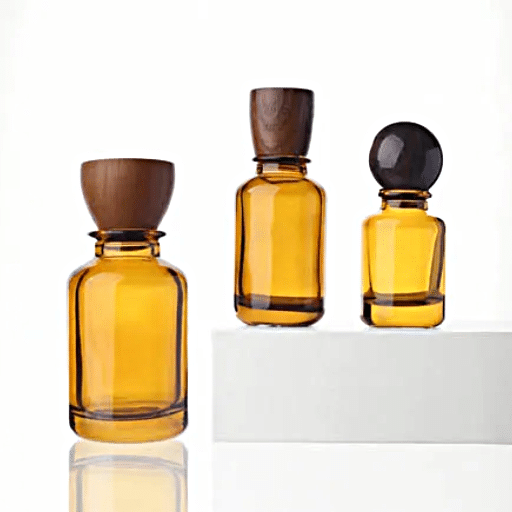
To ensure we’re getting a perfume bottle of the highest quality, it’s crucial to put in place a robust inspection process at various stages of production and delivery. At the beginning, quality control measures should focus mainly on materials, such as glass or plastic, to assess their strength, consistency, and resistance to breakage. Sampling and testing of dimensions during manufacturing can reveal whether the product is manufactured within the design tolerances specified.
Moreover, manufacturers must present detailed reports documenting compliance with safety and environmental regulations, such as REACH or ISO. A good step to further confirm the same quality of products on the market, one after another, is to implement pre-shipment inspections and employ third-party quality auditors. To avoid miscommunication and address shortcomings as soon as they are identified, it can be helpful to maintain an open line of communication with suppliers.
Setting Quality Standards for Perfume Bottles
When setting quality standards for perfume bottles, the primary factor is material selection to achieve the perfect balance of aesthetics and functionality. The use of high-quality glass, e.g., Type I borosilicate or soda-lime glass, is commonly recommended due to its transparency, resistance to chemical reactions, and capability to seal the fragrance’s full strength. Manufacturers should also consider glass thickness and density to ensure a perfect fit for shipping and handling through distribution channels, without compromising design. Lightened materials, such as the earth-friendly option, can also be considered, as can high-end plastics like PET or acrylic that meet the child-resistant packaging standard ISO 8317, provided they don’t alter the perfume’s sensory properties.
Durability testing, such as drop tests, thermal stability checks, and environmental resistance evaluations, is essential to ensure the bottles retain structural integrity under various storage and usage conditions. Besides, surface treatments, such as anti-scratch coatings or UV resistance, should be applied when required to extend the product’s life and keep it looking good. All these strict requirements contribute to the maximum possible number of good sides being realized in perfume bottle production, i.e., the conjunction of practicality, sustainability, and luxurious presentation.
Methods for Quality Control and Testing
The quality and reliability of the perfume bottles can also be monitored through a system of advanced testing methods and precision-engineered measurement systems. Among the major processes is checking dimensional accuracy using calibrated instruments, such as Coordinate Measuring Machines (CMM), to ensure the product conforms to the specified size in the design. The structural integrity tests, such as compression and impact, proved to be reasonable means of validating the bottles’ suitability for the pressures that should occur during manufacturing, transportation, and use.
Testing of materials is equally important; therefore, the use of spectroscopy methods such as Fourier-Transform Infrared (FTIR) spectroscopy should be an integral part of routine testing to ensure that glass or plastic materials have the same chemical composition and, to a certain extent, are not contaminated. Furthermore, the test for environmental stress cracking resistance (ESCR) will be conducted to ensure that the product is suitable for chemical resistance and temperature fluctuations over extended periods, and thus will be a criterion for bottle performance.
Optical inspections are used to validate the aesthetic characteristics of the bottles. Automated vision systems, which exhibit unsurpassed accuracy in recognizing scratches, bubbles, and other faults, are employed for this purpose. Moreover, surface rub testing is performed to assess the durability of coatings and labels under wear and handling conditions. The combination of these diversified quality control measures provides comprehensive data that effectively ensures the maintenance of high production standards continually.
Importance of Sustainability in Quality Assurance
Maintaining quality assurance through sustainability is crucial across sectors where environmental issues and resource conservation are receiving increasing attention. Sustainable quality assurance activities ensure the compatibility of reliable production with the necessary ecological norms and labor requirements. For example, the output of green gateways or the recycling of waste to produce novel substances are ways the company can advance environmental progress while aligning with consumer demand for green products. As an additional benefit, one can consider introducing energy-efficient technological developments into the quality control domain to reduce carbon emissions while not losing inspection capacity through automated systems, which are, of course, powered by renewable energy.
Not only are companies considering their products’ environmental impacts from production to disposal, but they are also exploring opportunities for resource optimization, waste reduction, and durability enhancement at each stage through lifecycle assessments. This is done by checking and enhancing the product’s longevity while considering the earth’s breath of life. The sustainability patch is sewn at the beginning, ensuring a strong, lasting sustainability bond. ISO 14001, the environmental management system certification, and others are making companies realize they should broaden their field of vision and target the future much more cleanly, and at the same time, more precisely. The companies that are actually doing this and making it part and parcel of their daily work are getting more numerous. The rewards are smaller, meeting the first sentence of our paragraph, or rather the third one, which mentions that sustainability should have been the connector. So our devotion to the earth must be more solidly linked to environmental degradation and conservation.
Reference Sources
Latest Perfume Bottle Trends 2025
This report highlights the latest trends in perfume bottle designs for 2025, emphasizing sustainability, refillable packaging, and vintage aesthetics. It discusses the growing consumer preference for eco-friendly materials and minimalist designs.
Perfumery Glass Bottles Market Report
This report examines the global market for perfumery glass bottles, which was valued at $1.56 billion in 2019 and is expected to reach $2.23 billion by 2032, growing at a CAGR of 5.25%.
Frequently Asked Questions (FAQs)
Where can I find reliable suppliers for wholesale perfume bottles?
One way to ensure the wholesale supply of perfume bottles is to do an extensive search and make a network of reliable sources in the market. Supplier directories and B2B websites frequently list vendors specialized in perfume packages, and that is where you can find your suppliers. Besides this, attending trade shows organized by the perfume industry can lead to valuable contacts with manufacturers and suppliers of bottles. In your search for luxury perfume bottles or personalized models, a critical factor to consider is the quality of the items. It is possible to negotiate greater discounts on bulk purchases of bottles and secure the rights to patented designs by establishing a good relationship with suppliers.
What types of packaging solutions are available for perfume bottles?
Perfume bottle packaging ranges from simple cardboard boxes to the most luxurious, exquisite perfume boxes. You can choose frosted glass, clear glass, or eco-friendly materials, all tailored to your budget and target customer group. Most importantly, however, the choice of custom packaging is more likely to create a positive first impression and lead to a significant increase in brand loyalty. Equally, the perfume industry is known for supplying a range of bottle types with varying packaging methodologies, such as roll-on and spray bottles, each containing a single fragrance and designed to satisfy a specific customer need. The link between scent and packaging is a significant consideration when planning to store and ship the product.
How do I choose the right size for my perfume bottle?
The key factors to consider when choosing a perfume bottle size include your target audience and your pricing strategy. Since now people from 3 groups need the 10ml, 50ml, and 100ml bottles, respectively, the sizes are also different. Travelers or customers who want to try will be attracted to small 10ml roll-on bottles, while people looking for the best value will buy the larger sizes. Moreover, it would be a good idea to consider the proportion of luxury brands represented in the bottle; therefore, the size of the designs and the cost of the material in the bottle can be convincing points in favor of choosing the larger bottles. In the end, understanding the market’s appetite for specific sizes can significantly influence your product’s success.
Are there options for eco-friendly empty perfume bottles?
Definitely, there are multiple eco-friendly options for empty perfume bottles, which is partially driving the request due to increased recognition of environmental care. Several suppliers currently offer bottles made from recycled materials and sustainable resources. In addition, if one wants, they can always go with refillable glass bottles, which support the circular economy by minimizing waste. The fragrance quality should remain untouched when opting for Earth-friendly packaging alternatives. Another factor that can help in this respect is a partnership with a manufacturer of custom perfume bottles that is committed to sustainable practices; this will not only enhance your brand image but also support environmental efforts.
